The current extremely rapid development within Artificial Intelligence is the matter of a widespread debate, and in most cases it is discussed in terms of being potential dangers to humanity and providing increased possibilities for students to cheat on examinations. When it comes to Artificial Intelligence based art or image generators (AIAG) the questions are mostly focused on similar negative issues, such as whether it really is art or if this is even going to render artists out of business. For the topic of this blog, however, I will reverse the direction of these discussion to take on a more positive and, hopefully more constructive perspective on Artificial Intelligence (*).
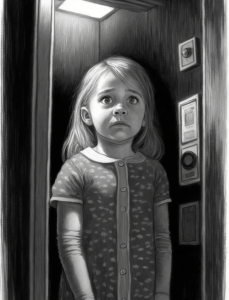
A small girl being very afraid of riding the elevator. Her anxiety may become a large problem for her unless treated in an early stage.
Real prompt: a small girl in an elevator, the girl looks very afraid and stands in one corner, the buttons of the elevator are in a vertical row, pencil drawing
The interesting thing is that we don’t focus the discussions more on the possibilities for these tools to be really useful, adding positively to the work. However, I will in this blog post give an example of where the use of AIAG:s as a toolcan be very important within the area of health care, and more specifically within child psychiatry. The examples are collected from an information presentation for parents to children who suffer from panic disorder. The person who has asked for the illustrations works as a counselor at a psychiatric unit for children and young people (BUP) in Sweden. Using the popular, and very powerful AI art generation application MidJourney, I have then produced the different illustrations for the presentation, some of which are now reproduced in this post.
The main captions of the images in this post are taken from the requests made by the counselor, and do not show the actual prompts used, which are in many cases much less comprehensive (shown in smaller type below).
A boy hesitates at the far end of the landing-stage, showing some fear of the evil waves that are trying to catch him.
Real prompt: a boy dressed in swimming trunks::1 is standing at the end of a trampoline::2 , the boy looks anxious and bewildered::1, as if he fears jumping into the water::3, you can see his whole body::1 pencil drawing
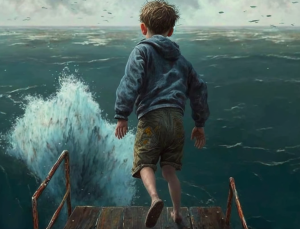
It is often difficult to find visual material that is suitable as illustrations in this kind of situations, where there are high requirements on integrity and data safety. Clip art is often quite boring and may also not provide any direct engagement in the viewers. The high demands of integrity delimits the use of stock photos, and copyright issues add further to the problems. Here we can see a very important application area for the Artificial Intelligence Art Generators, since these images are more or less guaranteed not to show any real human beings.
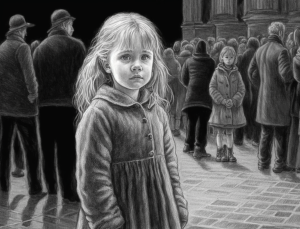
A small girl showing an all
but hidden insecurity, being
alone in the crowd on a town
square.
Real prompt: a small girl is standing in the middle of the town square with lots of people walking by, the girl looks anxious and bewildered, as if she fears being alone, pencil drawing
The images displayed in this post are all produced according to the wishes from the councellor which I have then converted into prompts that produce the desired results. Not all attempts succeeded at once, some images had have the prompts rewritten several times in order to reach the best images. This, of course, points to the simple fact that the role of the prompt writer will be very important in the future illustration creation.
Who does not recognize the classic scare of small children: “There is a wolf in my room!” It could of course also be a monster under the bed, or any other kind of scary imaginations that will prevent the child from sleeping.
Real prompt: a small boy being very anxious when the parent leaves his room for him to sleep, he believes that there is a wolf under his bed, pencil drawing,
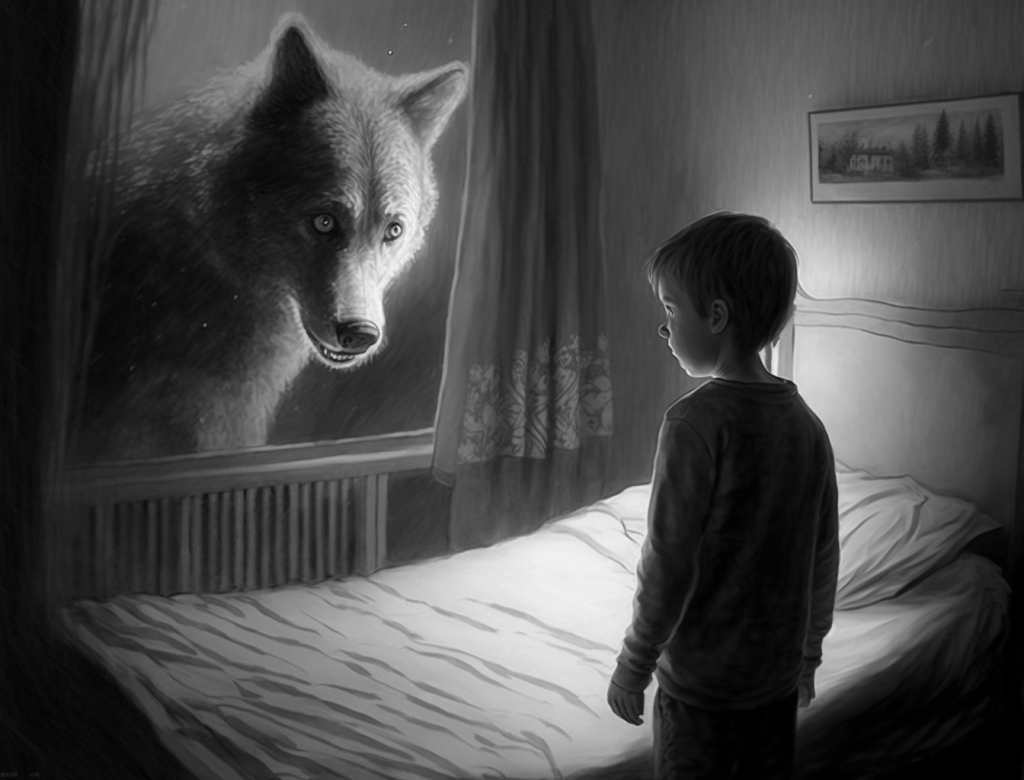
In the end, it is also important to point out that a good artist could of course have created all these pictures, and in even better versions. The power of the AIAG:s is, in this example, that it can enable some people to make more and better illustrations as an integrated part of the production of presentations, information material, etc. The alternative is in many cases to just leave out the illustrations, since “I cannot draw anything at all, it just turns ugly”.
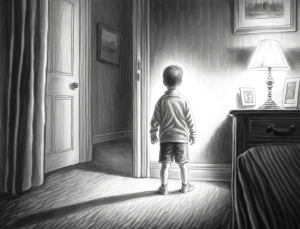
Even when there are no monsters in the bedroom, just the parent leaving the child alone, might be enough to invoke a very strong panic, which is difficult for the child to handle.
Real prompt: a small boy being very anxious when the parent leaves his room for him to sleep, pencil drawing
So, to conclude, this was just one example of when Artificial Intelligence systems can be very helpful and productive, if used properly. We just need to start thinking of all the possible usages we can find for the different systems, which, unfortunately is less common than we would want, to some extent due to the large amount of negative articles and discussions that concern the development of AI systems.
====================================
(*) Here in this post the term AI is used mostly in the classic sense of “weak AI”, namely the use of methods that are based on models that are imitating processes within human thinking, which does not necessarily mean that the system is indeed “intelligent”. In this way, the systems mentioned in this post are not really considered by me to be really intelligent, although they may well be advanced enough to emulate an intelligent being.

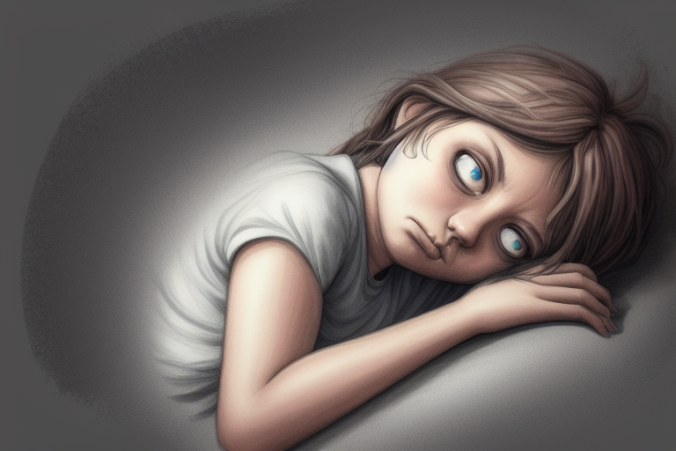
Leave a Reply
You must be logged in to post a comment.